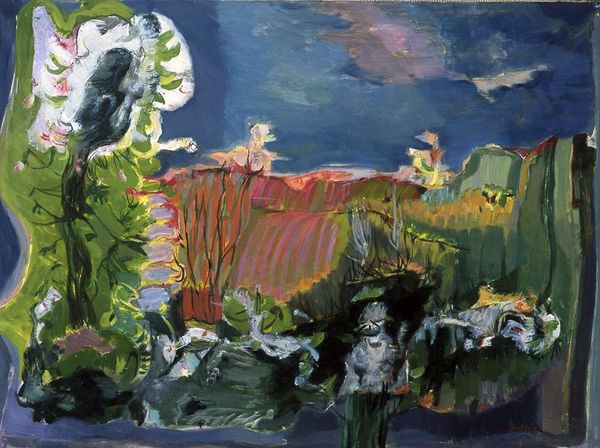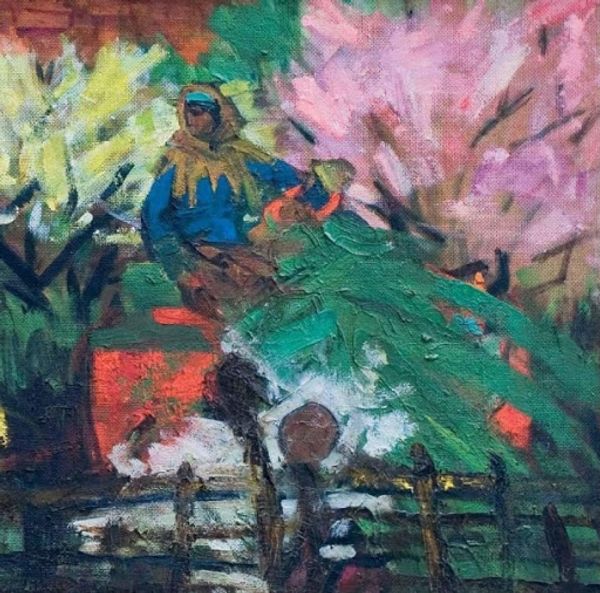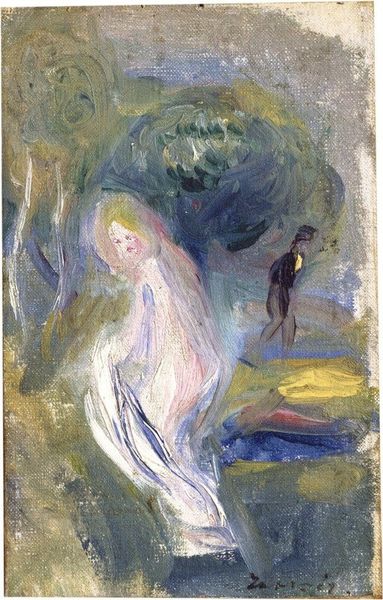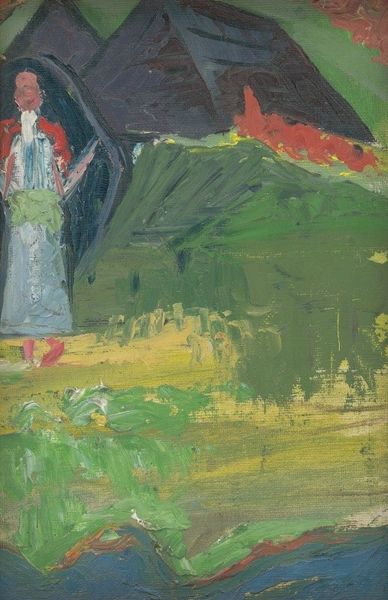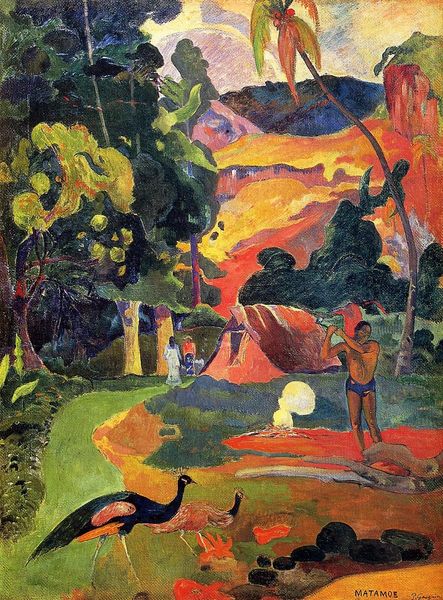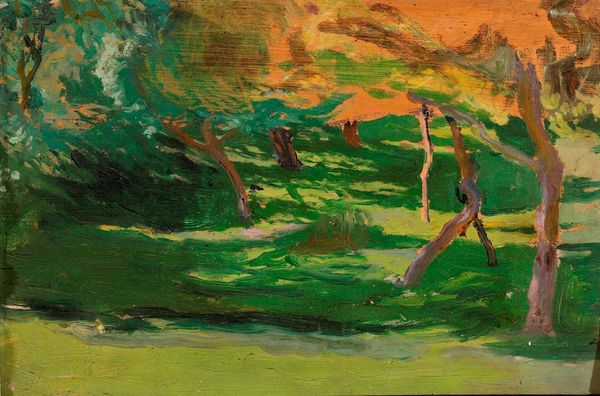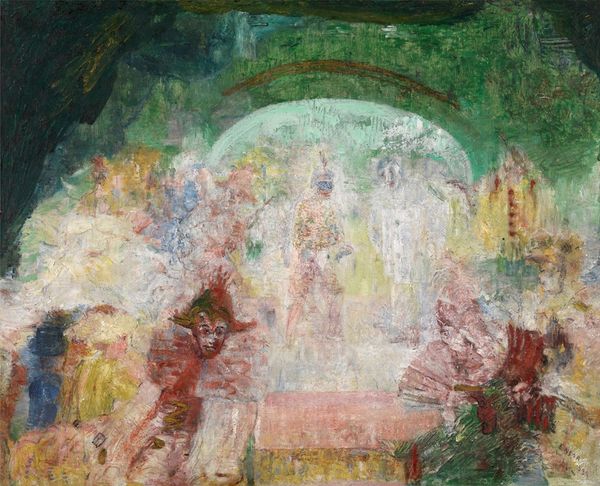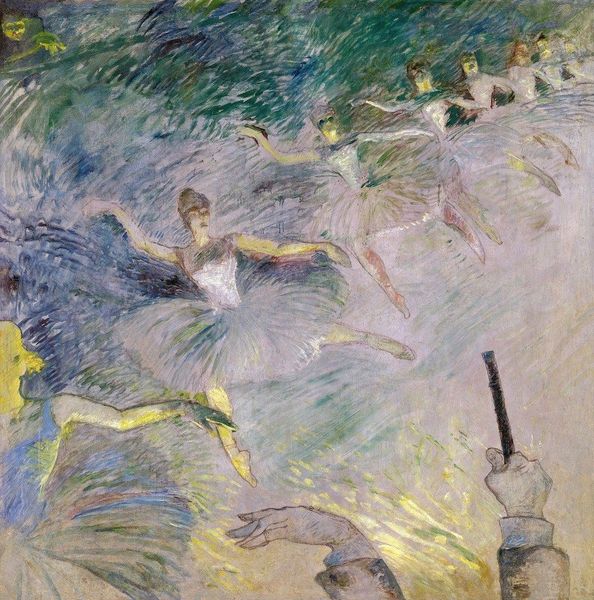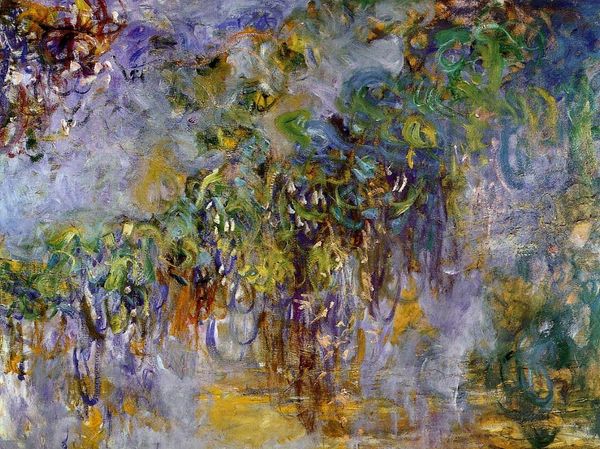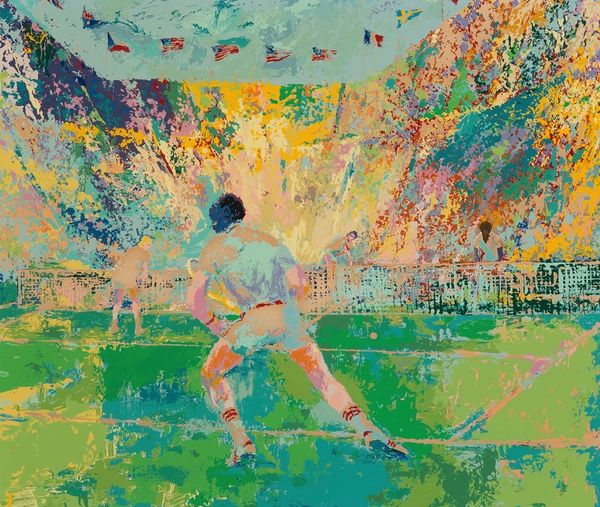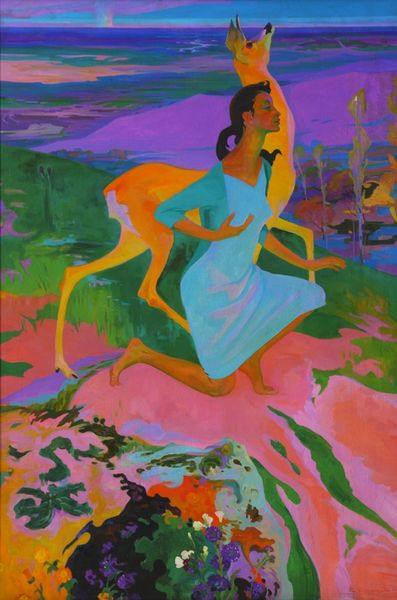
Dimensions: 70 x 75 cm
Copyright: Vasiliy Ryabchenko,Fair Use
Curator: This is Vasiliy Ryabchenko's "Flowering time" from 1987, executed in oil paint. The scene depicts figures in a landscape, evoking a serene atmosphere. Editor: The figures do seem secondary to the brushstrokes, the luscious materiality of the oil paint creating a dappled environment of leaves and filtered sunlight. What's striking to me is how the tangible, almost sculptural quality of the impasto dominates the scene. How do you see this work engaging with materiality? Curator: The materiality is key. Consider the historical context: this painting was made in the Soviet Union, where access to materials, particularly high-quality oil paints, wasn’t always a given. The very act of applying paint so lavishly could be seen as a subtle form of defiance, an assertion of individual expression against a backdrop of austerity. The painting’s subject matter becomes less about representation, and more about the experience of applying and perceiving the material. How does the apparent ‘naivety’ of the scene play into that materiality? Editor: That makes perfect sense! The thick application and slightly awkward figures draws your eye back to the paint itself. The subject matter normalizes access to landscape, sunshine, rest, whereas perhaps the reality was starkly different for ordinary citizens in the USSR at this time? So it’s the subversion of artistic skill almost that gives rise to freedom? Curator: Precisely. The labor is laid bare. It forces us to acknowledge not just what is depicted, but the act of depicting, the social context of making. Look at those strokes implying cherry blossom – what about the socio-political constraints might inspire these kinds of subjectivities, where landscape is not necessarily land ownership? Editor: It completely transforms my perspective; it moves beyond just being a pretty painting, and begins to speak about the environment it was conceived within, it’s conditions. The painting almost becomes about *painting*, which invites me to wonder about its potential place in exhibitions of today. Curator: Indeed! Seeing art this way reveals a much broader narrative, challenging what we typically consider beautiful, masterful art. Editor: Absolutely, I will definitely look more into materialist viewpoints on Post-Impressionism!
Comments
No comments
Be the first to comment and join the conversation on the ultimate creative platform.
